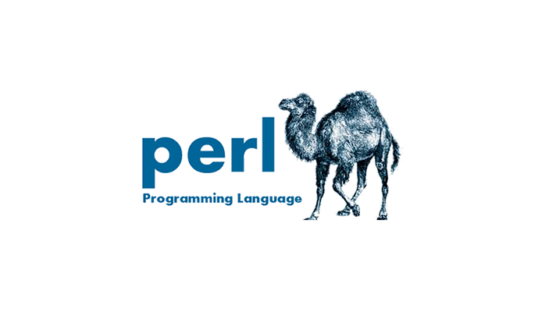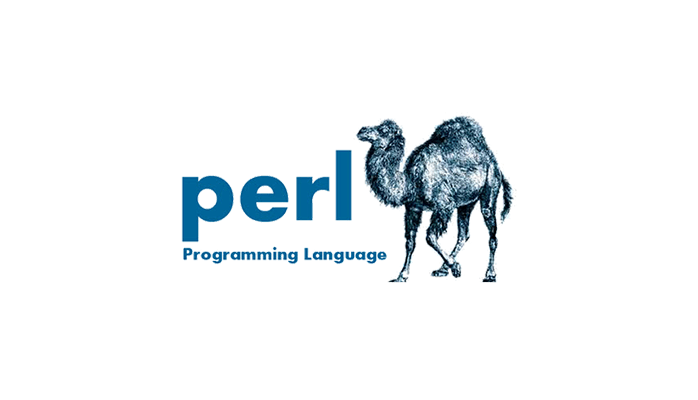Introduction to Perl Programming Language
Perl, often referred to as the “Swiss Army chainsaw” of programming languages, has a storied history in the world of computing. It was developed in 1987 by Larry Wall, and over the years, it has gained a reputation for being versatile, powerful, and flexible. Perl is known for its text manipulation capabilities, which is one of the reasons why it became popular in system administration, web development, and bioinformatics.
This blog post will explore Perl’s history, features, use cases, and why it remains relevant today. Whether you’re a beginner programmer or an experienced developer, understanding Perl can open doors to efficient scripting and rapid application development.
The History of Perl
Perl’s journey began in the late 1980s. Larry Wall, a linguist turned programmer, developed Perl while working at NASA. He was frustrated by the complexity of using various UNIX utilities to process text files and wanted a tool that combined the best features of existing languages like C, awk, and sed.
Perl 1.0 was released in 1987, and over the years, it evolved significantly. Perl 5, released in 1994, marked a significant milestone, as it introduced many modern features, including modules, object-oriented programming, and a more powerful regular expression engine.
Today, Perl has grown to include a wide variety of libraries, frameworks, and tools that cater to diverse applications. It still finds its niche in system administration, network programming, and web development, although newer languages like Python and Ruby have surpassed it in popularity. Nevertheless, Perl remains a cornerstone of the programming world, especially for those who need to process and manipulate text quickly.
Features of Perl
Perl is an incredibly versatile language, packed with features that make it suitable for a wide range of tasks. Below are some of the defining characteristics of Perl:
Text Processing Mastery
Perl’s strength in handling text data is one of its standout features. With its robust support for regular expressions and string manipulation, Perl allows developers to write complex text processing routines in minimal lines of code. This makes Perl a popular choice for tasks like data extraction, log parsing, and web scraping.Dynamic Typing
Perl employs dynamic typing, which means variables do not have a fixed type and can change depending on what is assigned to them. This provides flexibility but requires the programmer to be mindful of potential runtime errors.Built-in Support for Hashes and Arrays
Perl’s native support for data structures such as arrays and hashes (associative arrays) makes it easy to handle complex data without needing third-party libraries.Comprehensive Libraries
Perl comes with a rich repository of modules and libraries called CPAN (Comprehensive Perl Archive Network). This massive collection allows developers to extend Perl’s capabilities in virtually any domain, from web development to bioinformatics.Portability
Perl is highly portable across operating systems, which means you can run Perl scripts on different platforms like UNIX, Windows, and macOS without significant changes to the code.Object-Oriented Programming (OOP)
Although Perl is primarily known as a procedural language, it also supports object-oriented programming. This allows developers to structure their code more efficiently for large applications.Extensibility and Embedding
Perl is extensible, allowing you to embed it in other applications. It can also interface with other programming languages like C or Python, enhancing its utility in multi-language environments.

Why Learn Perl?
Efficiency in Text Manipulation
Perl’s reputation as a text manipulation powerhouse makes it an indispensable tool for developers working with logs, reports, and structured data. Whether you’re processing large text files or performing complex searches and substitutions, Perl excels in tasks that would require much more effort in other languages.Rapid Development
Perl’s concise syntax and extensive libraries make it a great language for rapid application development. If you need to write quick scripts or automate tasks, Perl offers the tools to do it fast and efficiently.Legacy Codebase
Perl is still widely used in legacy systems, especially in sectors like finance, academia, and bioinformatics. Learning Perl can provide you with opportunities to maintain, upgrade, or interact with these established codebases.CPAN: The Comprehensive Perl Archive Network
CPAN is one of Perl’s most valuable resources. It contains tens of thousands of open-source modules that provide pre-written code for just about any functionality you might need. This allows developers to stand on the shoulders of giants and avoid reinventing the wheel.Cross-Platform Support
Perl scripts run on almost every operating system, which is invaluable for developers who need to write code that can be executed in different environments without modification.Versatility in Domains
From web development to system administration, Perl is used in a variety of domains. Perl’s CGI module, although somewhat outdated, was pivotal in the early development of dynamic websites, and Perl still finds its use in backend web tasks today. System administrators appreciate Perl’s ability to automate tasks across platforms, making it easier to manage servers, process logs, and handle backups.Community and Longevity
Perl has been around for decades and has a robust, supportive community. Many resources and tutorials exist online, making it a great language for both beginner and advanced programmers.
Practical Use Cases of Perl
System Administration
One of the earliest uses of Perl was in system administration. Tasks like automating backups, parsing log files, and managing user accounts are ideal for Perl. Its regular expression capabilities, combined with the ability to interface with system commands, make Perl a perfect choice for administrators who need to automate repetitive tasks.Web Development
In the early days of the internet, Perl was a popular language for developing web applications, especially with the CGI (Common Gateway Interface) module. While frameworks like Django and Rails have taken over web development in recent years, Perl’s Mojolicious and Dancer frameworks still provide powerful tools for creating web applications.Bioinformatics
Perl has a strong presence in bioinformatics, where its text manipulation prowess is used to analyze DNA sequences, protein data, and other biological information. The BioPerl library, for example, provides modules for computational biology and bioinformatics, making Perl a valuable asset in scientific research.Network Programming
Perl’s sockets module allows developers to create networking applications, making it useful for writing scripts that automate tasks over a network, such as fetching data from web servers, automating FTP tasks, or writing custom web clients.Data Mining and Log Analysis
The ability to quickly parse and analyze log files makes Perl an ideal choice for data mining. Whether you’re extracting insights from server logs, analyzing customer behavior, or processing data from scientific experiments, Perl provides the tools you need.Text Parsing and Reporting
Perl is frequently used in industries that require a lot of text parsing and report generation. Its regular expression engine allows developers to extract meaningful data from massive volumes of text quickly and with high precision.
Learning Perl: Tips and Resources
Start with the Basics
If you’re new to Perl, it’s best to begin with basic scripting. Learn how to declare variables, use control structures (loops, if-else), and work with arrays and hashes.Master Regular Expressions
Regular expressions are an integral part of Perl. They allow you to search, extract, and replace data in strings with a high degree of flexibility. Learning regular expressions will make you a more efficient programmer, not just in Perl but in other programming languages as well.Explore CPAN
One of Perl’s greatest strengths is CPAN. Once you have a basic understanding of the language, dive into CPAN to discover the wealth of modules available. These modules can save you hours of coding by providing pre-written functions for almost any task you can imagine.Join Perl Communities
Perl has a dedicated and active community. Platforms like PerlMonks (https://www.perlmonks.org/) are great places to ask questions, seek advice, and learn from more experienced Perl developers.Utilize Online Resources
Many online tutorials and resources are available for learning Perl. Some of the best include:Practice Makes Perfect
Like any language, the best way to learn Perl is to practice. Write scripts to automate small tasks, manipulate text files, or even develop small web applications using frameworks like Dancer.
Challenges in Perl Programming
While Perl offers many strengths, it’s important to understand some of the challenges and criticisms associated with it:
Readability
Perl’s “write once, read never” reputation stems from its syntax, which can be cryptic, especially with the heavy use of regular expressions. Code that involves a lot of symbols can be hard to maintain, even for experienced developers.Competition from Other Languages
In recent years, languages like Python and Ruby have overtaken Perl in terms of popularity, especially in web development and scripting. Both of these languages offer similar functionality but tend to be more readable and beginner-friendly.Perl 6 (Now Raku)
The development of Perl 6 (now renamed Raku) created some fragmentation in the Perl community. While Perl 5 is still widely used, the introduction of Perl 6 led to confusion and divided the community. Raku is a different language, but it still shares some of the Perl ecosystem.Legacy Code
Maintaining older Perl scripts can be challenging, especially if they were written with poor documentation or cryptic coding practices. Many businesses still run on Perl codebases, and modernizing these systems can be daunting.
Conclusion
Perl may not be as trendy as some modern programming languages, but it remains a powerful tool, especially for tasks involving text manipulation, system administration, and bioinformatics. Its rich history, combined with its flexible and efficient design, make it an invaluable language for specific domains.
With its extensive library of modules on CPAN, Perl is well-suited to a wide variety of applications. While newer languages may offer cleaner syntax or be more beginner-friendly, Perl’s sheer versatility ensures that it will continue to have a place in the programming world for years to come.
If you’re looking for a language that offers rapid development, powerful text processing, and a deep community, Perl might just be the tool you need to tackle your next project. Dive in, explore its features, and take advantage of its extensive ecosystem to become a more versatile developer.
For more learning resources, check out:
Hyperlinks:
PERL ONLINE COMPILER

